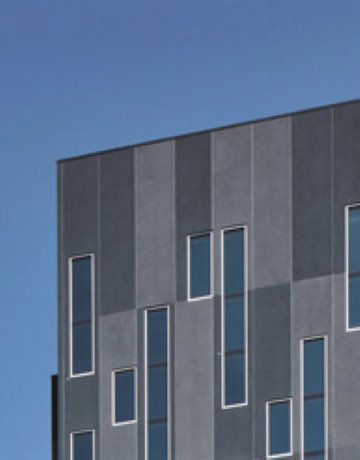It was 2002, when LEED (Leadership in Energy and Environmental Design), with the Canada Green Building Council (CaGBC), emerged in the Canadian building industry with the claim to create healthier indoor spaces, reduce waste, save energy and water, and drive innovation.
Since 2004, the CaGBC has certified over 2,800 LEED buildings and registered more than 5,000 in Canada, the second most LEED projects worldwide. LEED was created in the U.S. in 1998. But according to a LEED accredited professional and CEO of Western Interior Design, the popular standard that transformed the building industry needs its own revamp.
"For LEED to continue to be more relevant, it needs to become more holistic and human-centric," said Ann Squires Ferguson, also a registered interior designer. "A lot of people are aware of its failings. It’s trying to evolve."
LEED was quickly embraced on Canada’s West Coast. Interest was eventually driven by clients and a construction industry that followed trends, Ferguson said. LEED soon spread eastward and by the mid-2000s, LEED was mainstream.
"It came from a really good place," Ferguson said.
Victoria architect Will King, AIBC, said LEED had its genesis in the wish to improve the world’s building stock.
"It was intended to raise the bar," said King, principal at Waymark Architecture. Up to then, buildings were usually built to code, which was typically the cheapest way. When LEED arrived, it promised buildings would be better and more sustainable than building code structures with its Certified, Silver, Gold and Platinum designations.
At the start it was difficult to get Canadian construction to take a lead on LEED.
"The industry is slow to change. They were making good money. It was risky to change," King said. But the reluctance was soon met with the CaGBC’s strong marketing and promotion. "Green" became the construction buzzword, spurred by LEED’s commitment to provide environmental leadership, stimulate green competition, raise consumer awareness and transform building. Soon city councils and provincial and federal governments were on board, said King who is LEED accredited.
The genie was out of the bottle.
LEED’s benefits were clearcut. Manufacturers were forced to make better, more environmentally-friendly building products, said King.
"And the important thing about LEED, it made people prove a building was awesome."
LEED took each known aspect of building and strove to make them better. Thus, a LEED building became valued by both the client and the public. In the bid to be seen as "green," owners were willing to pay for certification, Ferguson said.
But soon, extra costs related to earning certification points took a toll.
"You had to pay expensive consultants. You couldn’t get your bookkeeper to do it," King said. If building a $10-million structure, it could cost $300,000 for consultants to verify LEED status, King said.
As LEED evolved, with Version 4 today, the bar kept being raised, making certification harder to attain. What’s been happening is that instead of spending extra money for certification, owners now aim for "LEED targeting," Ferguson said.
"What does that mean?" she asks. Owners still want the marketing benefits associated with LEED but are looking at less expensive methods to achieve that.
In 2014, the Project for Lean Urbanism produced a paper, "The Problems with LEED." The paper cited LEED achievements: raising environment awareness, offering multiple methods that are customized for a variety of projects, causing large, expensive projects that will be built to become more environmentally sensitive and drawing attention to the benefits of reusing old buildings.
LEED problems were also outlined: certification is overly complicated, time consuming and expensive, it’s become more about earning points than improving the environment with users "gaming the system" by going after easily attained points to boost scores, it’s not demanding enough, giving points to universities that offer a course on green building or to employers that give workers a video-game room, it’s indiscriminate in how it weighs credit points (installing a bike rack outside a building draws the same number of points as redeveloping a brownfield site), the focus on certifying proprietary products rather than defining generic product standards can lead to confusion and give proprietary brands unfair advantage, it ignores location, thus creating cookie-cutter projects for any climate rather than considering neighbourhoods, and it doesn’t deduct points of ignoring walkability.
As Ferguson points out, LEED started from the premise that construction is harmful so a LEED project is an attempt to "dig your way up," meaning to take steps to mitigate environmental damage.
"LEED makes buildings less bad. The problem is, there’s no room for true vision."
Other more visionary building systems have arrived, including the International Living Future Institute’s Living Building and the International WELL Building Standard.
The WELL Building Standard addresses not only the design and operations of buildings, but also how they impact human behaviours related to health and well-being.
"It starts from the human and works out. It’s really human-centric. LEED is building-centric," Ferguson said.
The concepts addressed are air, water, nourishment, light, fitness, comfort, mind and innovation
Living Buildings, meanwhile, are self-sufficient, produce more energy than they use and collect and treat all water on site. King has worked on some of the first Living Building designs in the Pacific Northwest. He doesn’t expect it will dethrone LEED due to demands necessary to build a net zero structure.
While he wouldn’t discourage someone from building a LEED structure, he believes a Living Building is preferable because certification requires actual, rather than anticipated, performance over 12 consecutive months.
Still, when it comes down to the nuts and bolts, King said the current BC Building Code is just as advanced as LEED certification.
"But LEED will evolve," he said. "Some people would never do a LEED project. Some people would only do LEED because of the market cachet. But we have to look beyond LEED."
Ferguson believes that LEED will not disappear.
"There’s growing knowledge that it is a tool. Even a flawed system is better than no system."



Recent Comments
comments for this post are closed